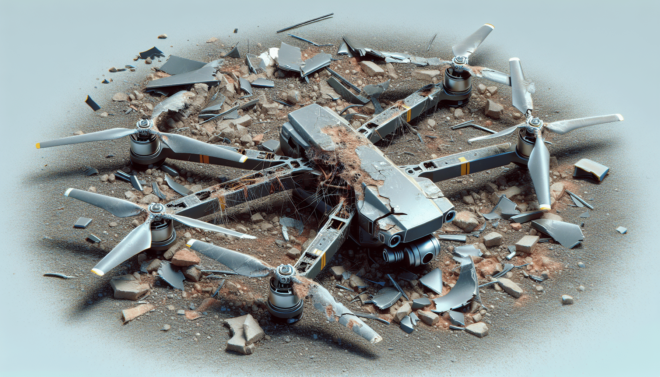What Should I Do If My Drone Experiences A Mid-air Collision?
What should you do if your drone experiences a mid-air collision? It can be a stressful situation, but knowing the proper steps to take can help you handle it calmly and effectively. In this article, we will discuss what you should do if your drone experiences a mid-air collision, including steps to take immediately after the incident, how to assess the damage, and what to do next.
Immediate Steps After a Mid-air Collision
The moments immediately following a mid-air collision can be crucial in determining the extent of the damage to your drone and what steps you should take next. Here are some immediate steps you should follow:
-
Land Your Drone Safely: If your drone is still in the air after a mid-air collision, try to safely bring it down to the ground as soon as possible. Avoid flying your drone any further to prevent additional damage.
-
Assess the Situation: Once your drone is safely on the ground, assess the situation to see if any other items were involved in the collision, such as trees, buildings, or other drones. This can help you gather more information about what may have caused the collision.
-
Check for Damage: Inspect your drone for any visible signs of damage, such as broken propellers, cracks in the body, or other issues. Take note of any damage you find, as this will be important when determining next steps.
Documenting the Damage
Take photos of the damage to your drone, as well as any other items involved in the collision. This documentation can be helpful when filing an insurance claim or seeking repairs for your drone.
Remember, stay calm in this situation, and take a deep breath. It’s important to approach the mid-air collision with a clear head to ensure you handle the situation effectively.
Assessing the Damage
After the immediate steps have been taken, the next step is to thoroughly assess the damage to your drone. This will help you determine whether your drone is salvageable or if it will require repairs or replacement.
-
Check Your Drone’s Functionality: Test your drone to see if it is still functional after the mid-air collision. Check to see if it can take off and land properly, if the camera is still working, and if all the controls are functioning as they should.
-
Evaluate the Structural Integrity: Inspect the body of your drone for any cracks, dents, or other damage that could affect its stability and flight performance. Pay close attention to the propellers, motors, and other components that could have been impacted by the collision.
-
Test the Battery and Other Components: Make sure to check the battery, gimbal, and other essential components of your drone to ensure they were not damaged in the collision. These components are crucial for the drone’s performance and safety during flight.
Seeking Professional Help
If you are unsure about the extent of the damage to your drone, consider seeking help from a professional drone repair service. They can provide a more thorough assessment of the damage and recommend the best course of action for repairs or replacement.
Remember, safety should always be your top priority when handling a mid-air collision with your drone. Avoid flying your drone if you suspect it may be damaged, as this could lead to further accidents or injuries.
Next Steps After a Mid-air Collision
Once you have assessed the damage to your drone and determined its condition, it’s time to decide on the next steps to take. Depending on the extent of the damage, you may need to repair or replace your drone. Here are some next steps to consider:
-
Contact Your Insurance Provider: If you have insurance for your drone, contact your insurance provider to file a claim for the damage. Provide them with all the documentation and information you have gathered about the mid-air collision to expedite the claims process.
-
Research Repair Options: If your drone is repairable, research repair options in your area or online to find a reputable service provider. Make sure to get quotes for the repairs and compare them before making a decision.
-
Consider Replacement: If the damage to your drone is extensive and repairs would be costly, consider replacing your drone with a new one. Research different models and brands to find one that fits your budget and flying needs.
Tips for Preventing Mid-air Collisions
Preventing mid-air collisions is essential for the safety of your drone and others in the airspace. Here are some tips to help you avoid mid-air collisions in the future:
- Always Fly in Open Areas: Choose open, unobstructed areas to fly your drone to reduce the risk of collisions with other objects.
- Maintain Line of Sight: Keep your drone within your line of sight at all times to avoid collisions with other drones or objects.
- Follow FAA Regulations: Be aware of and follow the regulations set by the Federal Aviation Administration (FAA) for safe drone operation.
Remember, accidents happen, but being prepared and knowing the proper steps to take can help you handle them effectively. By following these guidelines, you can navigate a mid-air collision with your drone with confidence and clarity.

